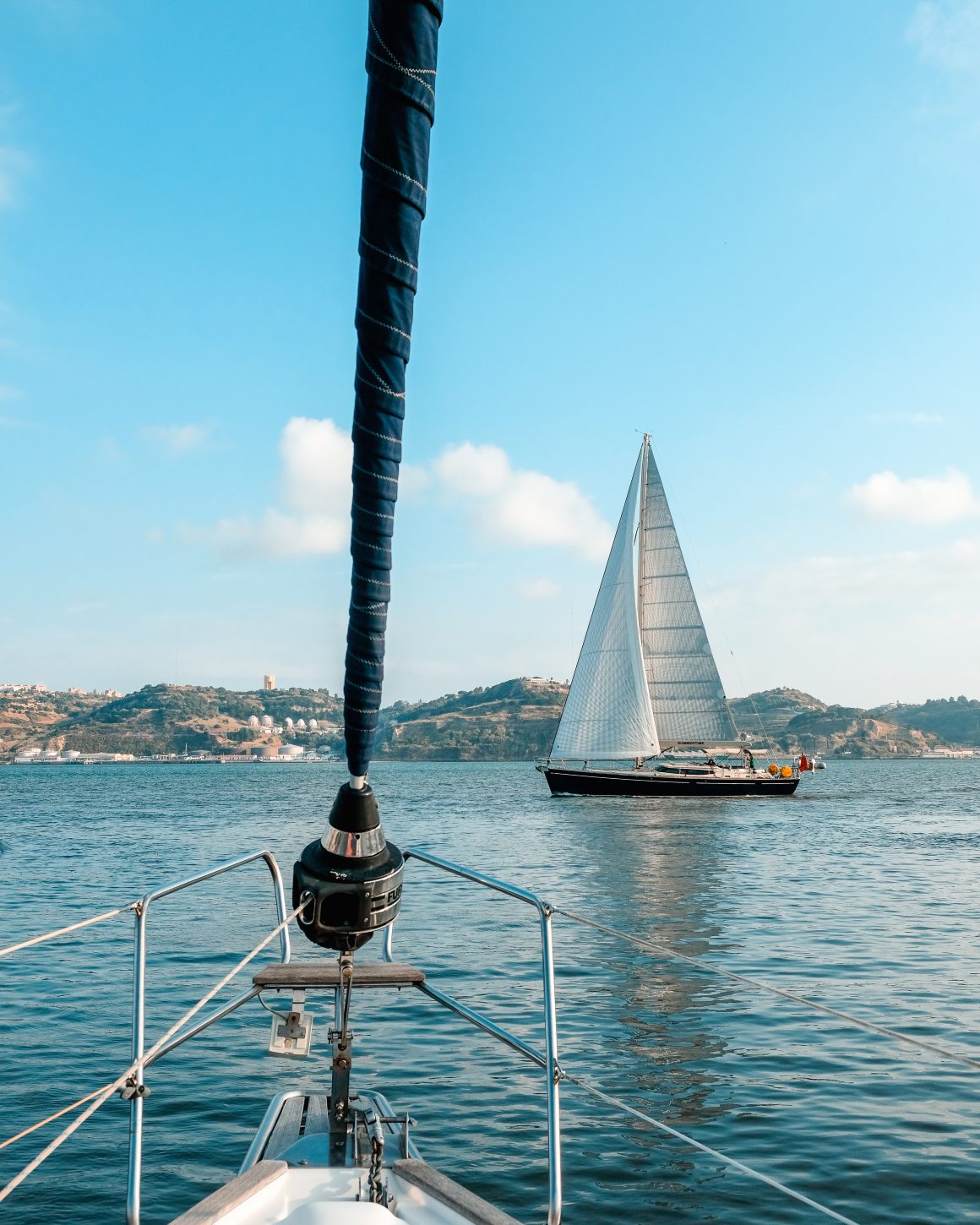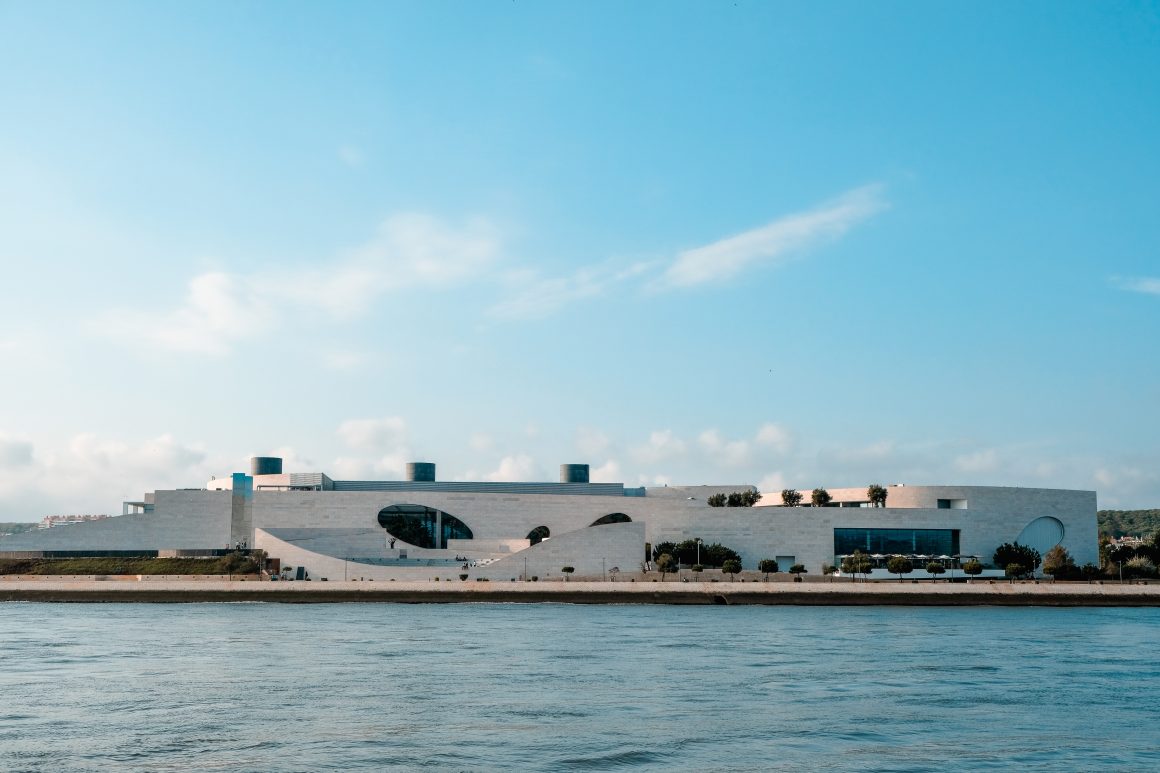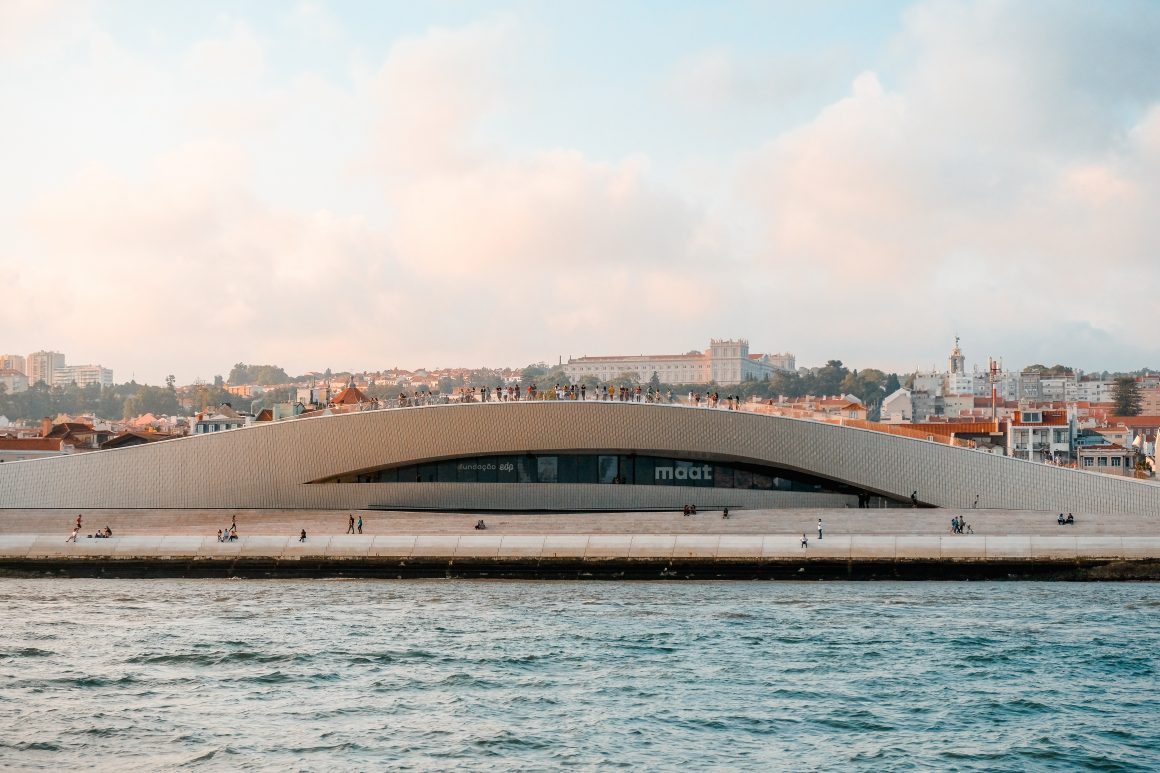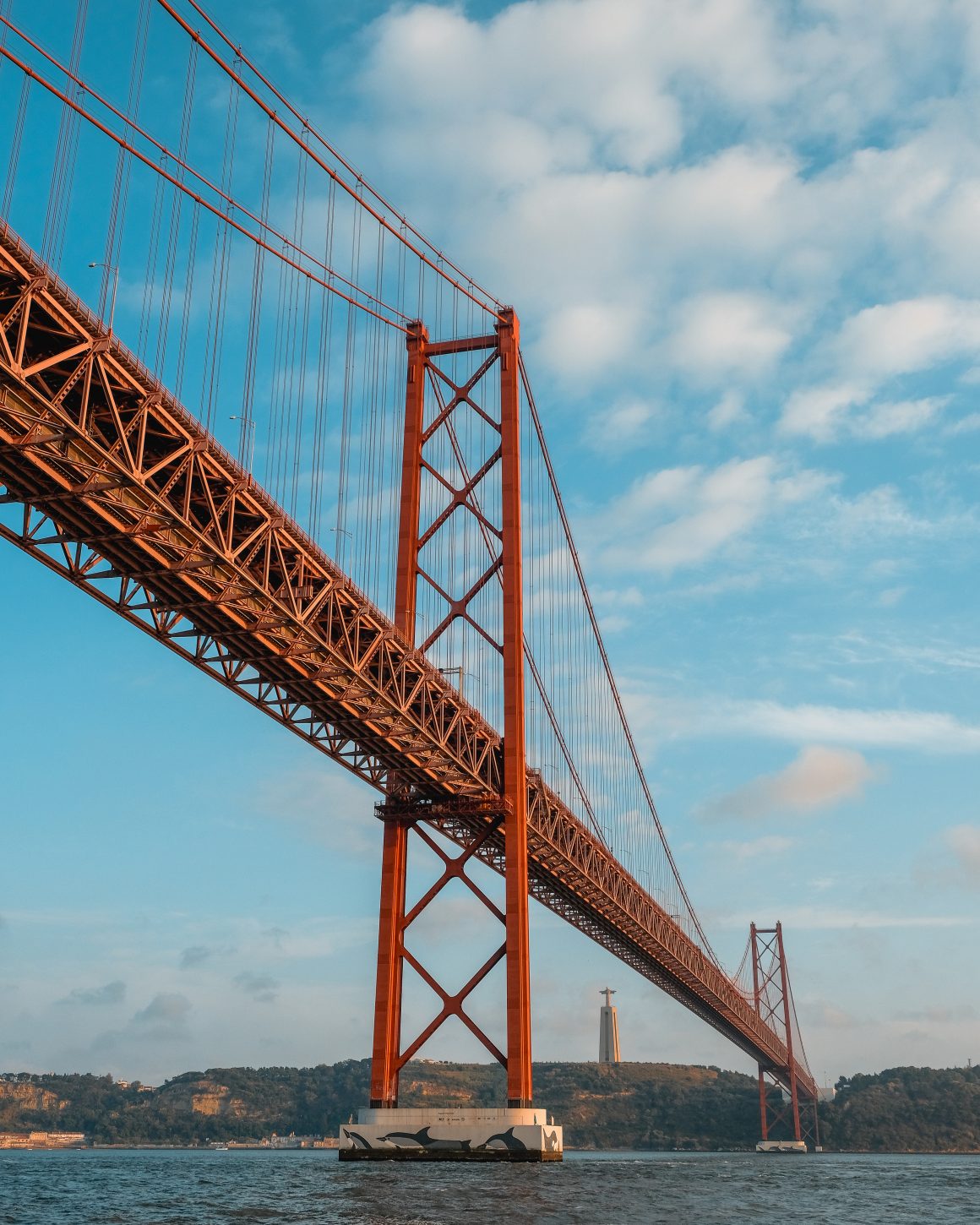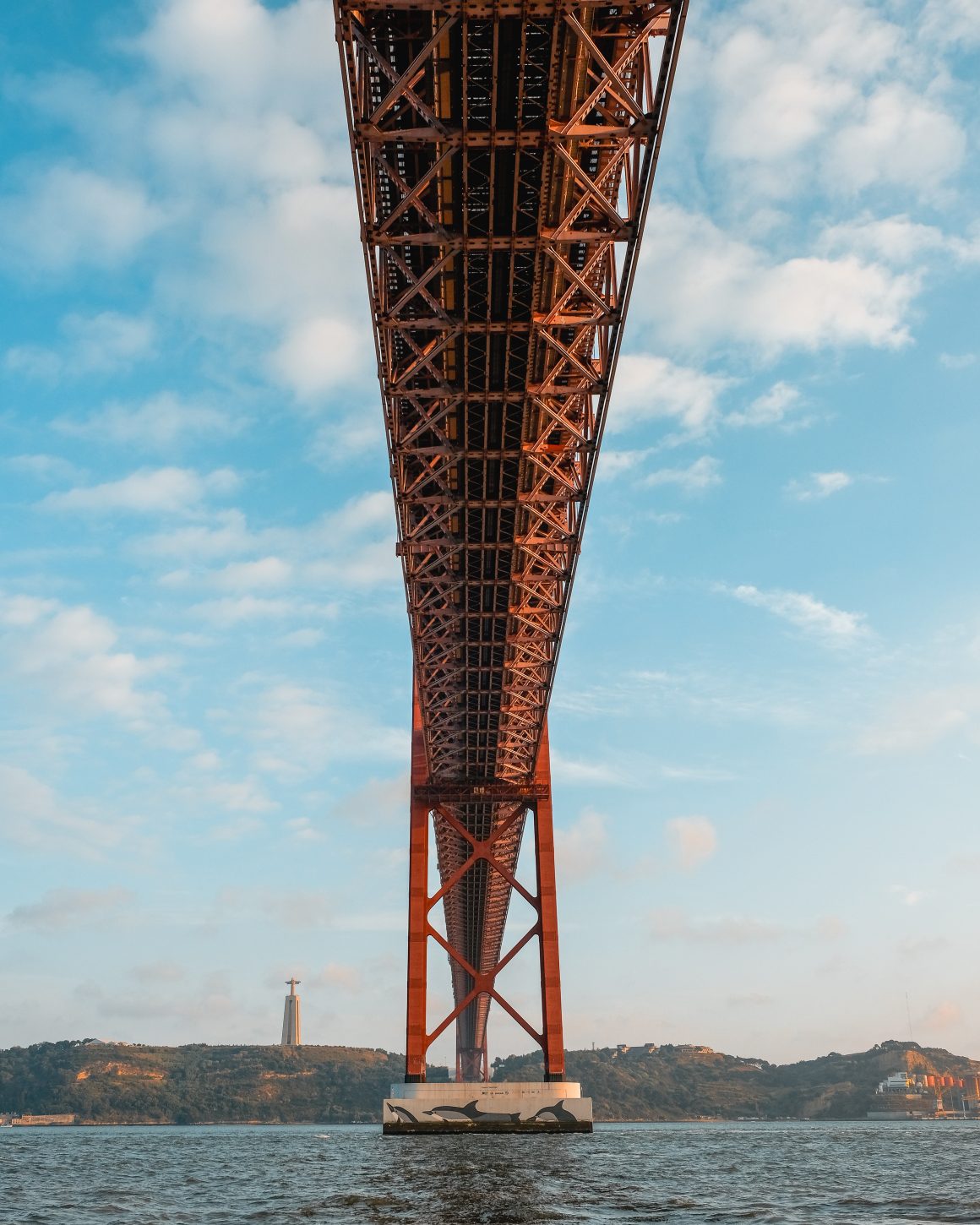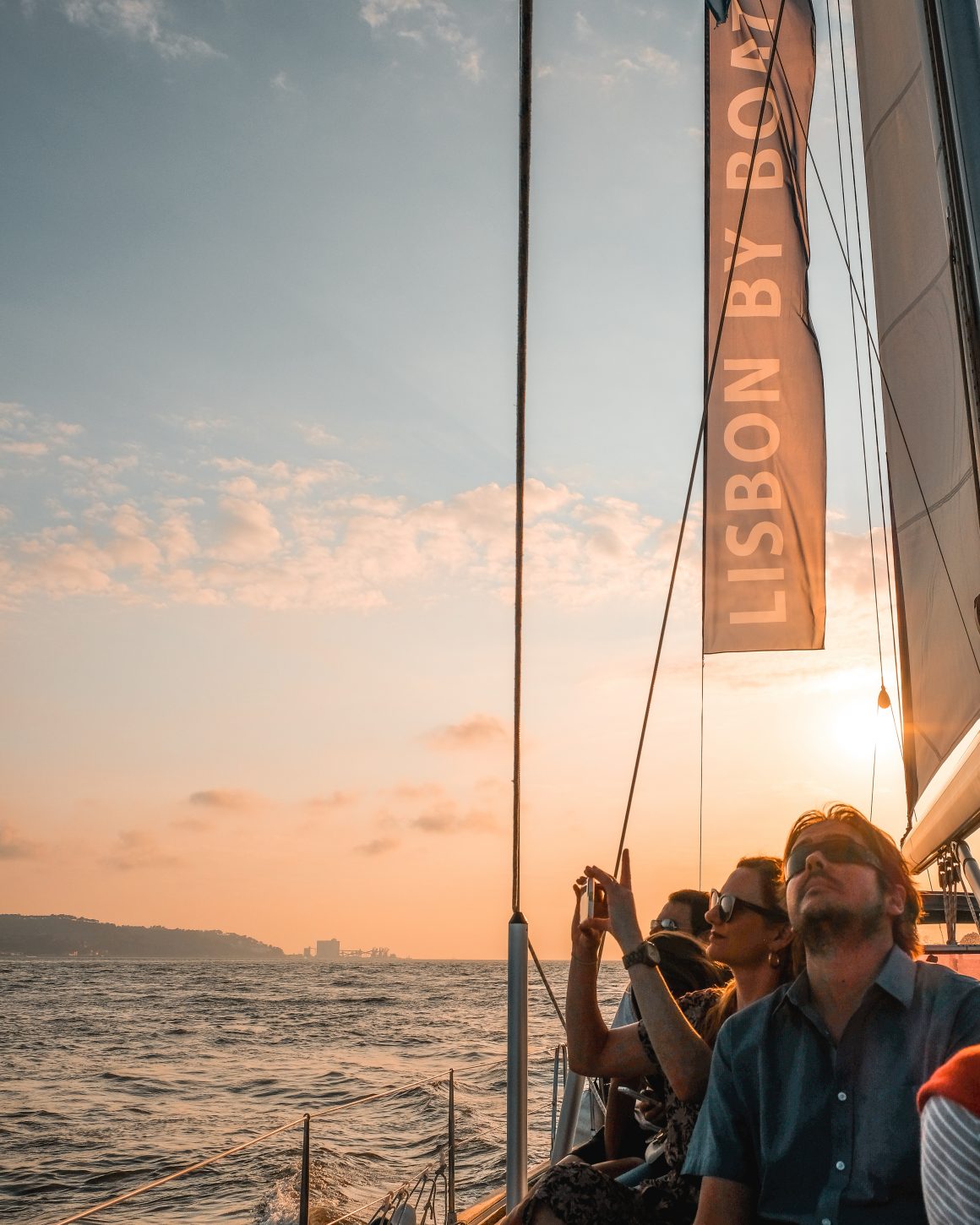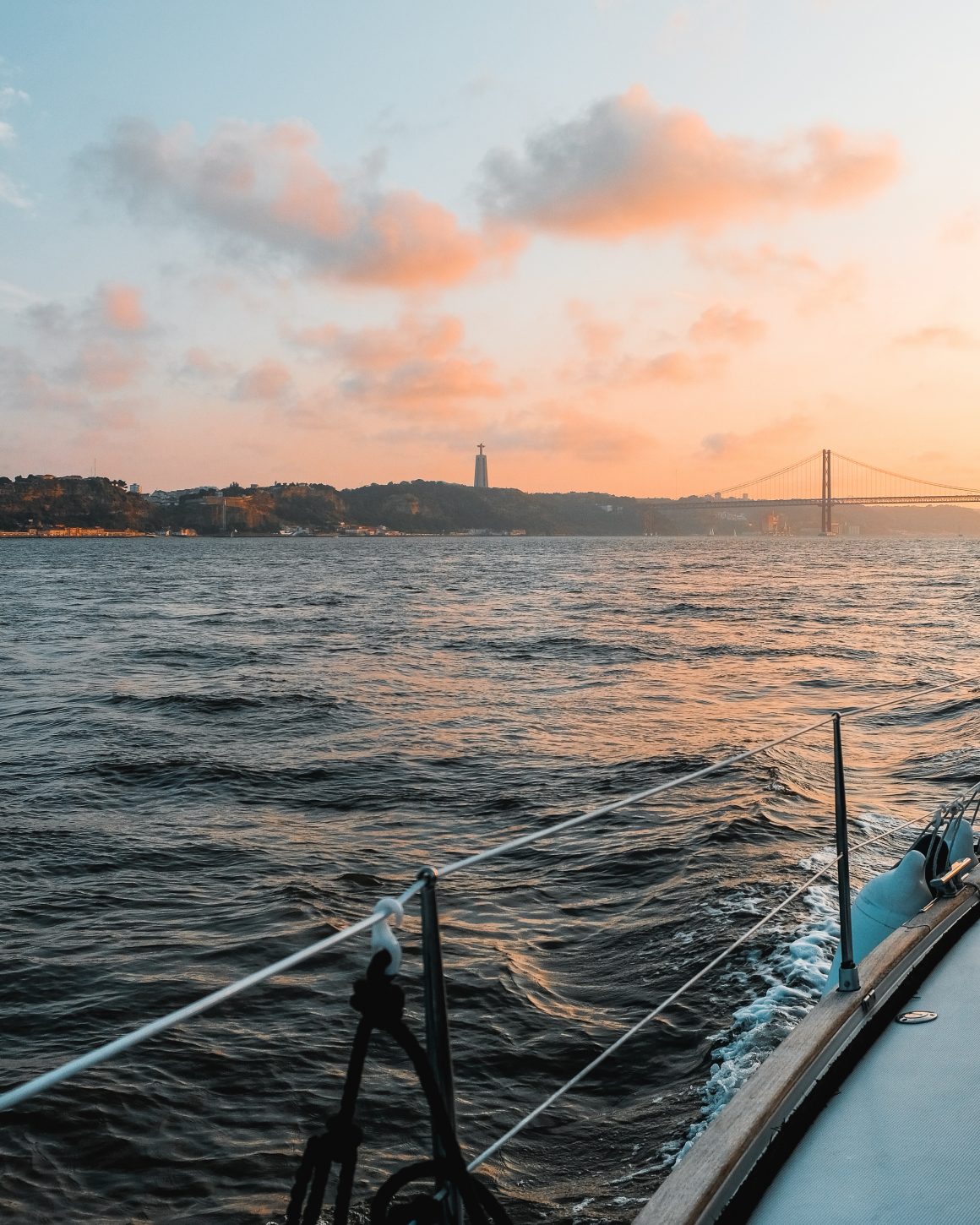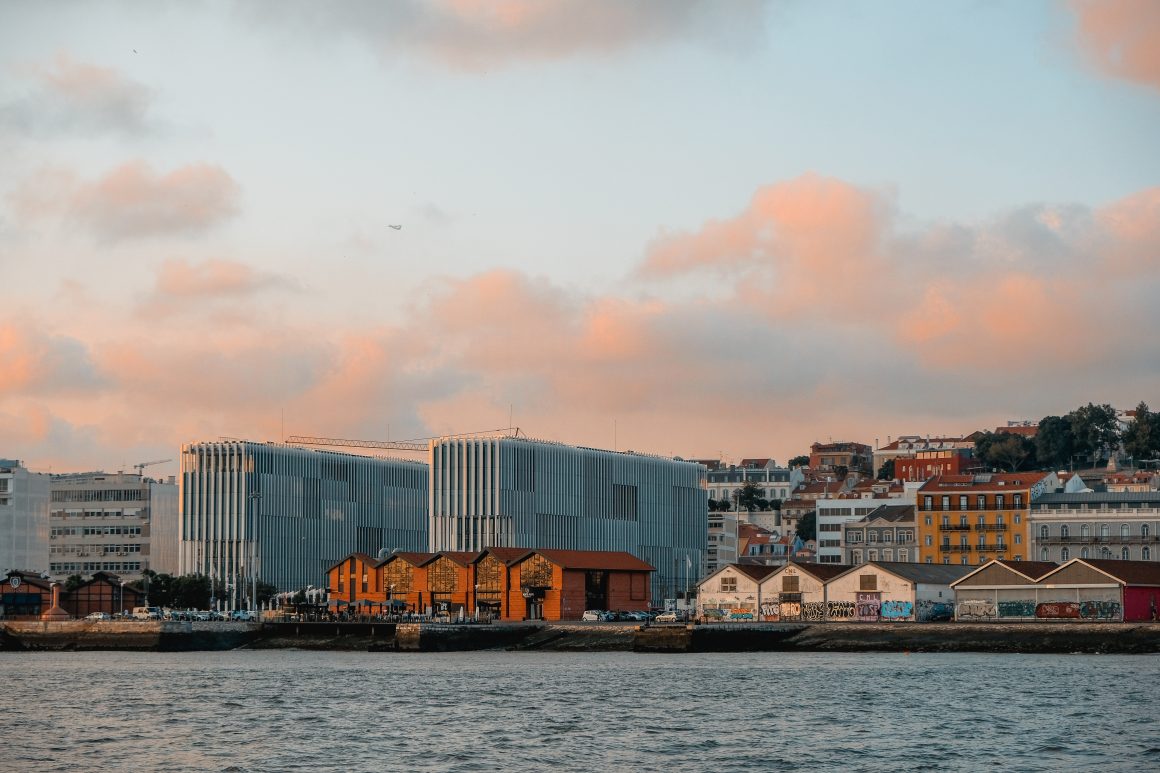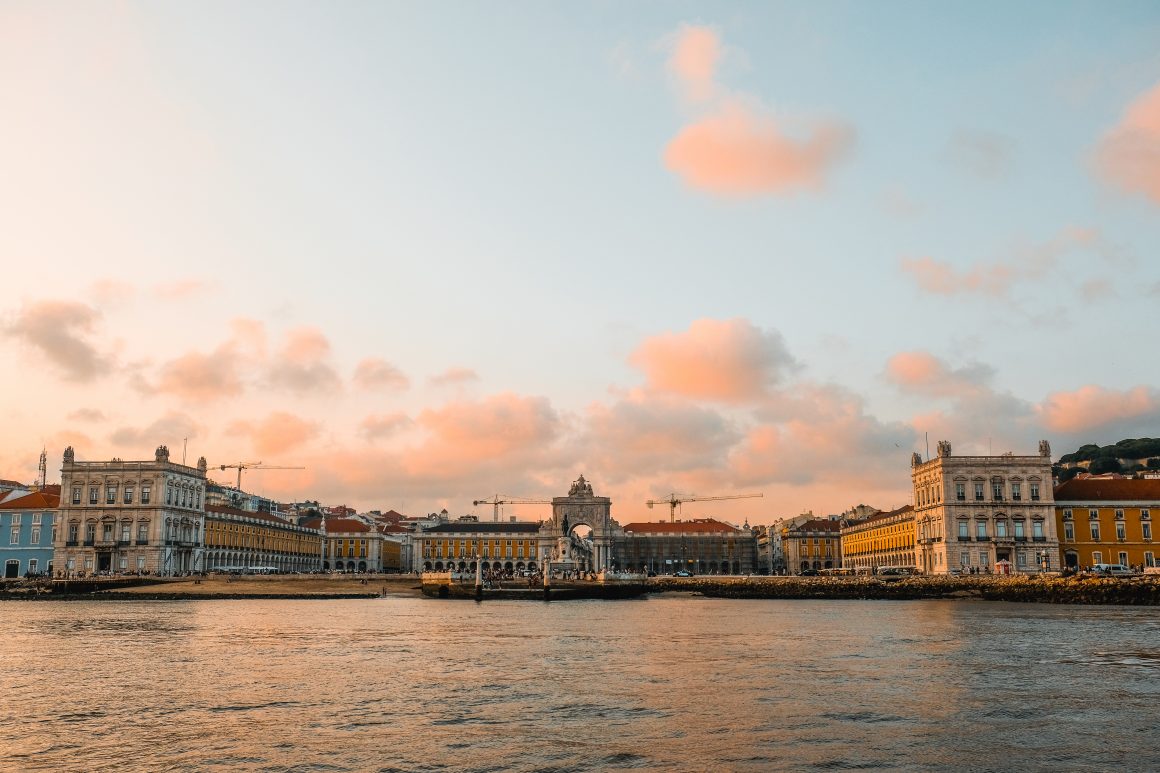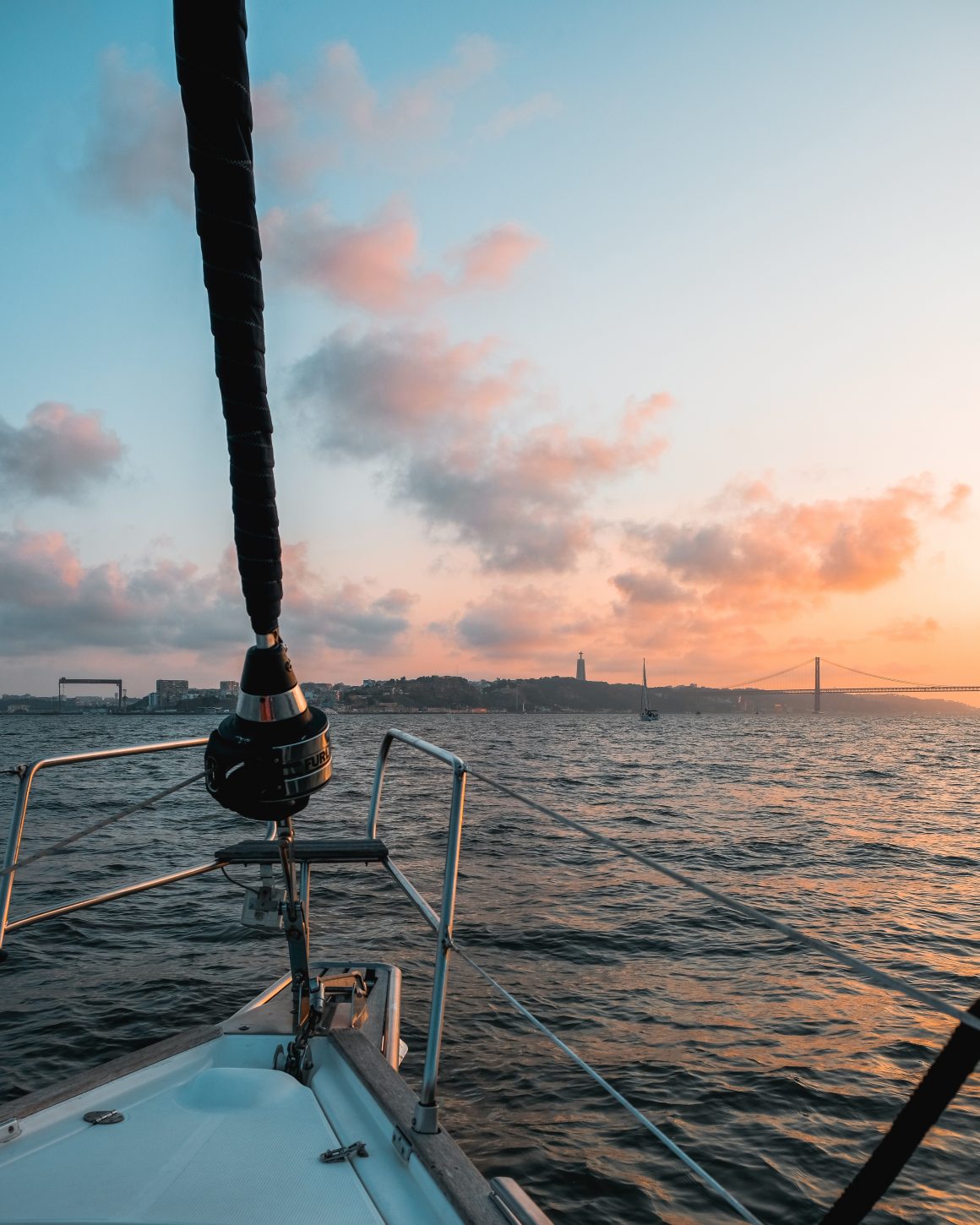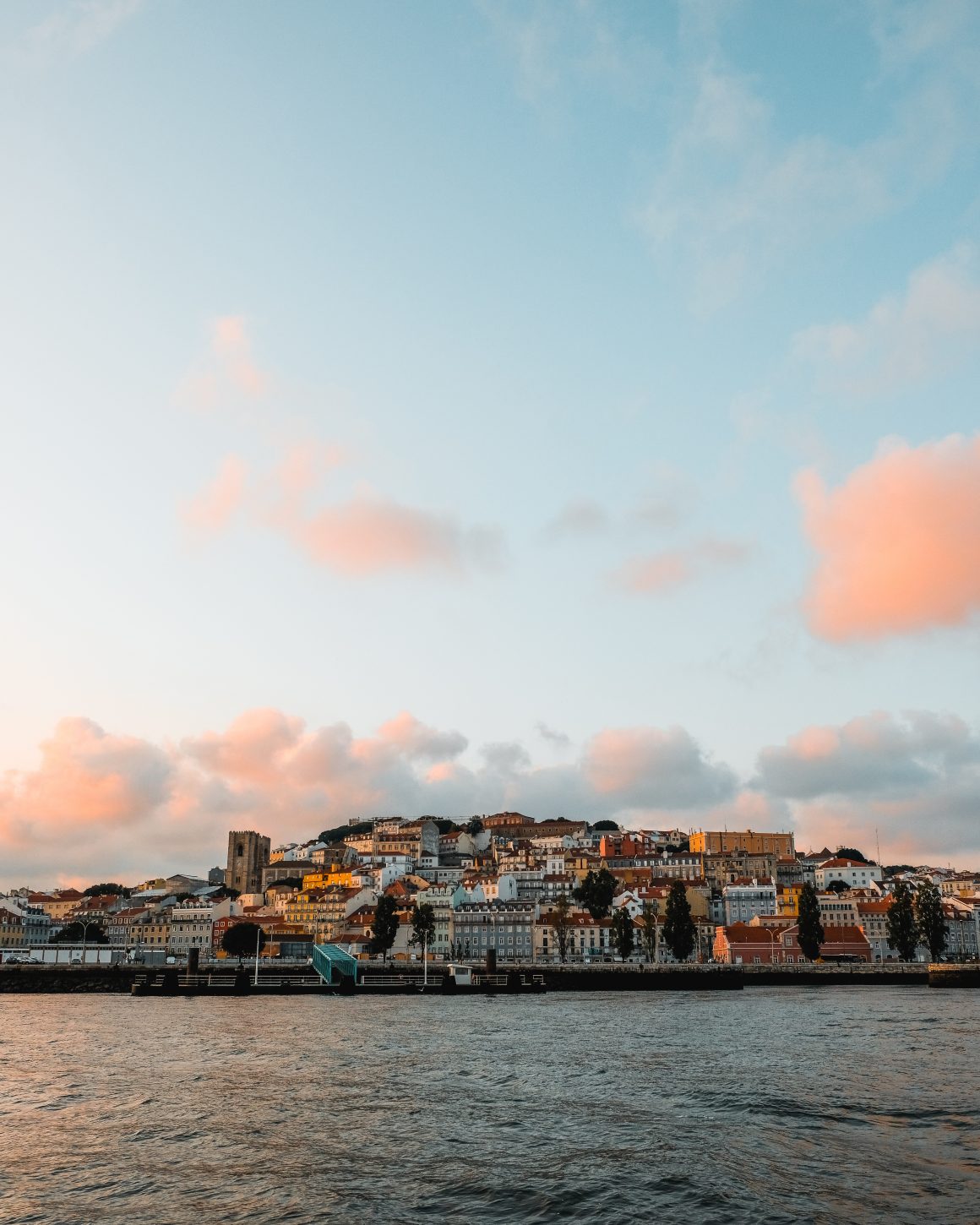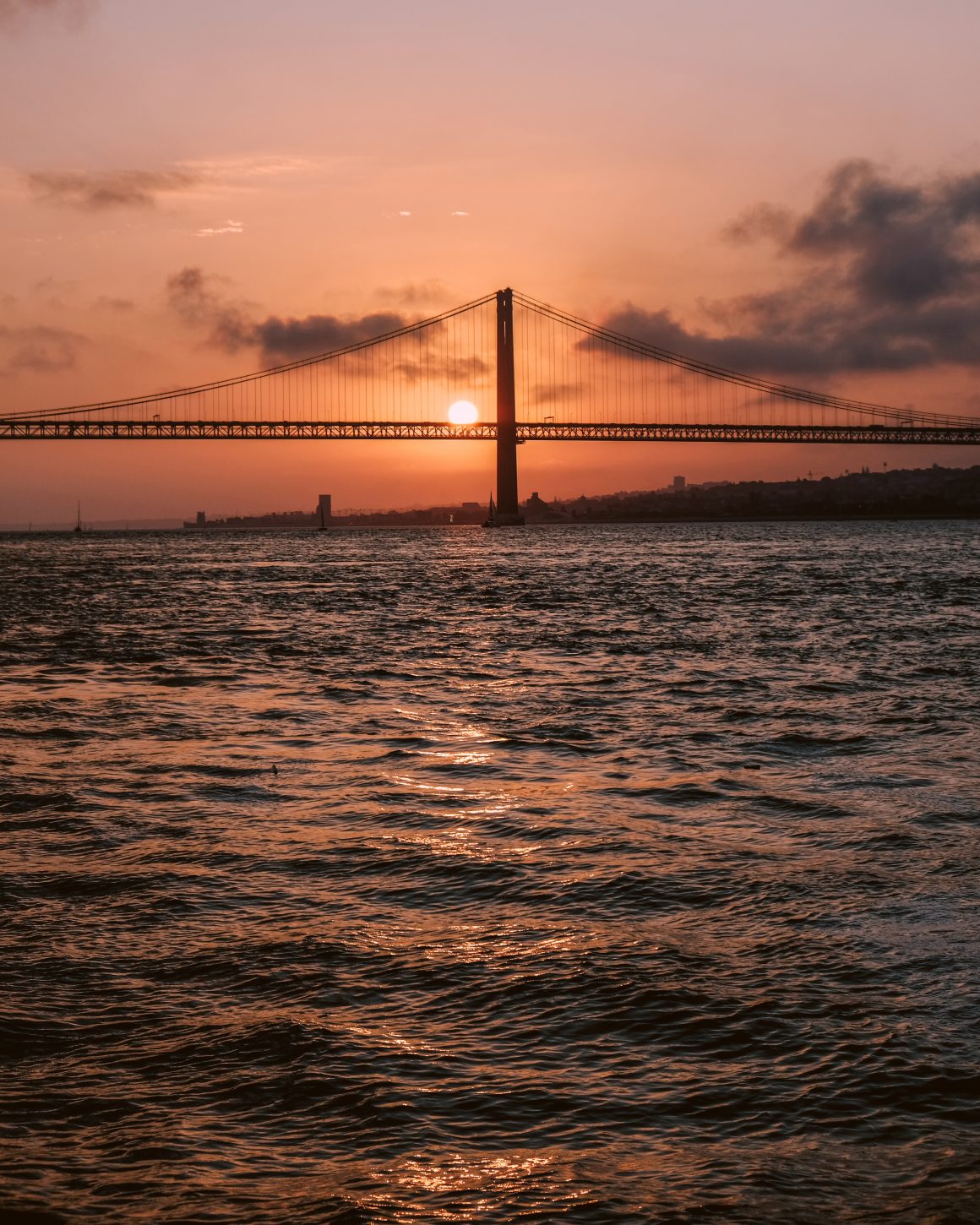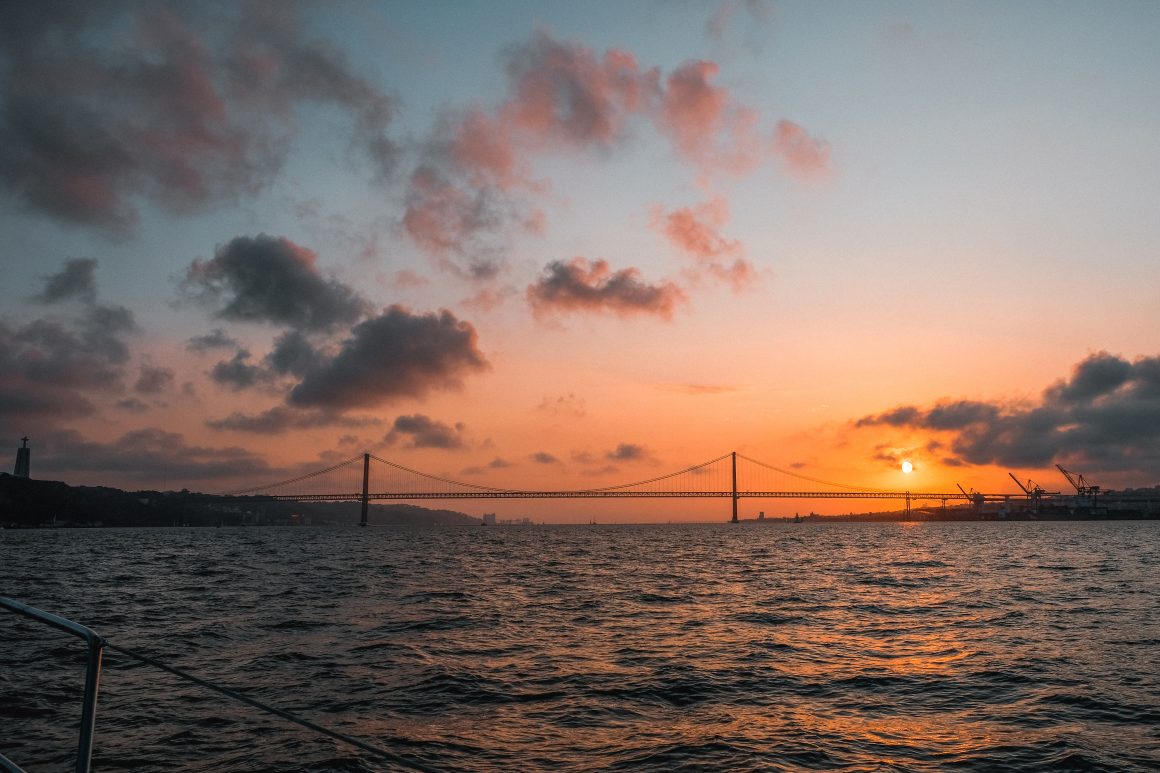While Lisbon’s terra firma offers bountiful sights to see and neighbourhoods to explore, it doesn’t take long for anyone to notice that dauntingly wide aquatic avenue coursing through the Portuguese peninsula, ebbing and widening, and ultimately embracing the Atlantic Ocean at its end, attracting both visitors and locals alike on its cool blue surface. The Tagus River, or Rio Tejo, demarcates the banks of Lisbon and its southern margin, the municipality of Almada, and have been forever flowing where ships of myriad shapes and sizes have drifted along its unstoppable current, giving this city a picturesque, laid-back atmosphere. It’s a glittering blue ribbon by day, a molten metallic strip of gold by sunset, and a mercurial mystery by night. No sooner had I arrived in Lisbon than I wanted to sail on its watery depths.
And for want of experience — as the method of crossing the river by using the ferry, despite its reliability, is simply not enough — I organised a sunset cruise experience on a sailing yacht with a few friends. You know it’s not often one gets to sail on a luxury yacht with wine and tapas on-board unless, well, you’re some opulent yacht owner. But it turns out, one doesn’t need to be an opulent yacht owner. One simply needs to go to Belém marina, pay €45 and hop aboard Lisbon By Boat, possibly the best reviewed boat tour company around here (check out their glowing TripAdvisor profile). If you’d rather have an exclusive boat with your exclusive sailing friends, prepare to shelve €300, and you’ll have 2 beautiful hours of gliding along Lisbon waters on your own yacht like the extra that you are. But since we’re practically plebeian, we mixed up with other passengers, who all turned out to be calm and genuinely pleasant (like us). And with a funny, friendly crew, we sailed along Tagus the best way we could, splayed on deck, wine on hand and grin on our faces, as we were seeing Lisbon from an incomparable river perspective.
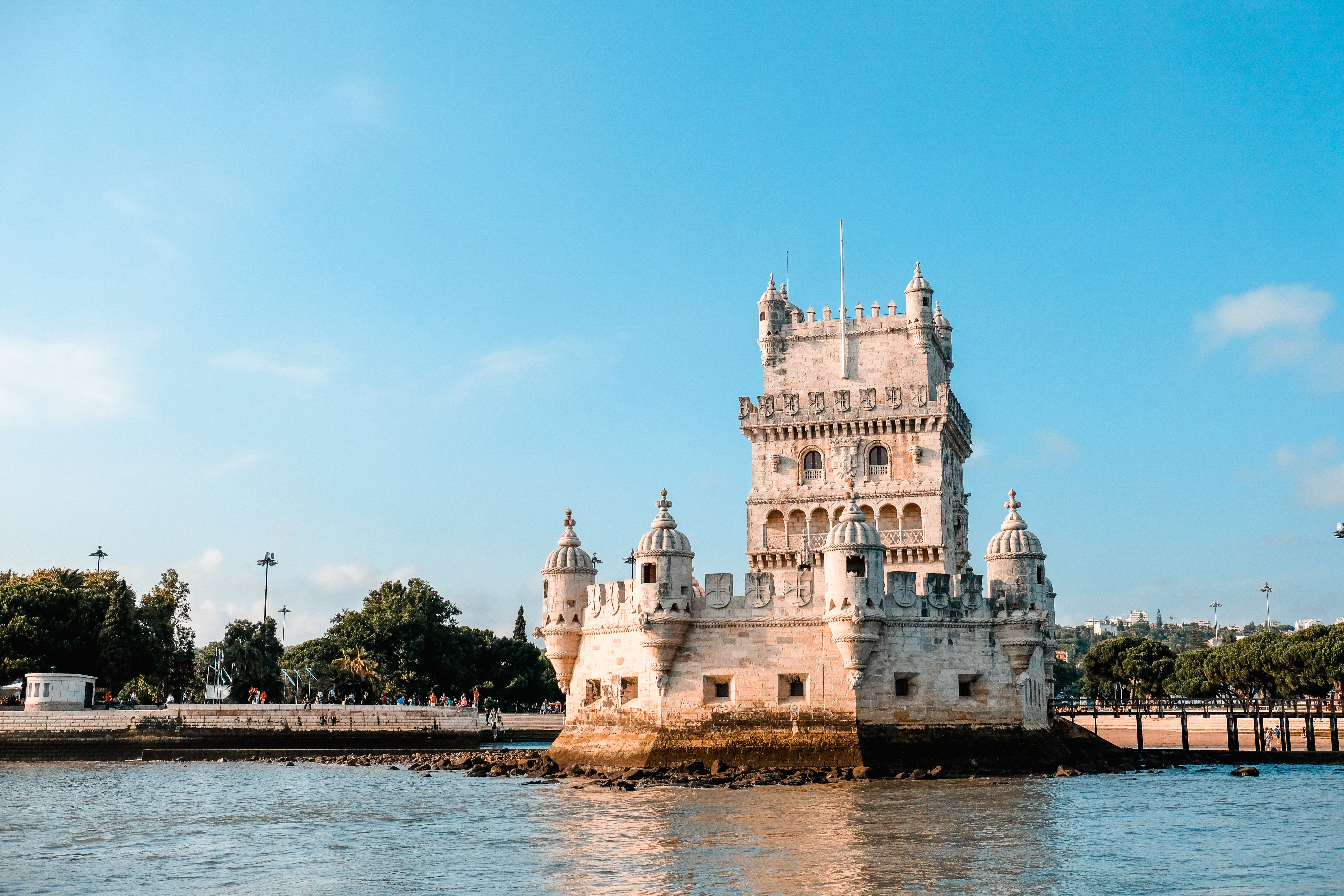
During the cruise, I often reminded myself that we were navigating the same waters that, throughout history, bore witness to the incredibly legendary Portuguese naval pursuits — as well as the constant flow of human politics and commerce, from colonisers to merchants to crusaders, from migrants and visitors alike — the same waters where historic explorers stationed themselves before setting off, discovering far-flung lands. Here, beautifully epitomised by the enigmatic Belém Tower, or Torre de Belém, a 16th-century icon in “The Age of Discovery”, as this became the first European port to establish trade routes with India and China. At this magical hour of the day, the sunlight cast its shine on the tower’s lioz stones, making the structure look like its emanating some golden energy, emphasising its intricate Manueline style. What’s more, from the river’s viewpoint, the countless Order of the Christ shields wrapping around the tower is even more apparent. You’ve heard of this Order before: they were Knights Templar 2.0, rebranded after Vatican banished them from Europe.
Then there are the modernist touches along the Tagus, structures that lay vast yet gentle: the sprawling Champalimaud Foundation, a biomedical research facility, and MAAT (or the Museum of Art, Architecture and Technology), which ascends from the Lisbon banks like a wave, a white ripple of stone, concrete and tiles, reflecting light like a piece of architectural poetry on the river.
And we sailed on, the current gently bobbing on the ripples, carrying us forward, as up above the light changes — copper and vermillion slowly dancing with the shades of blue. The behemoth that is the Ponte de 25 Abril bridge stood proud and resilient over Tagus, as you’d find how truly large it is when you sail underneath. This feat of civil engineering, not dissimilar to San Francisco’s Golden Gate Bridge, connects Lisbon to Almada and further south of Portugal. Hardcore locals will tell you of its dramatic origin, as it was used to be called Ponte Salazar, after the infamous dictator António de Oliveira Salazar, whose Estado Novo party presided Portugal for 48 years. But it was later changed to its current name, symbolically after the Carnation Revolution, which took place on 24 April of 1974.
Right beside the bridge, we took a glimpse at the Cristo Rei statue, with arms wide open as though welcoming those who pass below, and perhaps also bidding a good farewell to all the ships that leave the estuary. It’s the exact, yet smaller replica, of the Christ the Redeemer sculpture in Rio de Janeiro, Brazil, and I’ve been told this stood as a symbol for Portugal’s neutral status during World War II, and for having avoided the horrors of war. Well, I ain’t much of a Jesus Christ groupie, but bless Portugal for its pacifism and that we were sailing beatifically along its peaceful rivers.
On the final league of our voyage, we approach the historic centre of Lisbon, and truly what a sight. The Tagus might not offer the expansive, renowned glories of the rivers Seine, Danube, Rhine or Rhône, but it’s distinctive in a sense that it’s closely connected to the Atlantic, so it feels like you’re sailing on sea instead of river. And the beautiful sight of Lisbon, its squares and grand architecture, the red-roofed, colourful houses rising on the hills of Castelo and Alfama all bathed with that sublime golden-hour light, is certainly a magnificent sight to behold.
So whenever you’re in town, don’t forget to leave the land. Embrace your inner voyager and take a boat, preferably during the golden hour, and let the magic of Lisbon wash over you.


